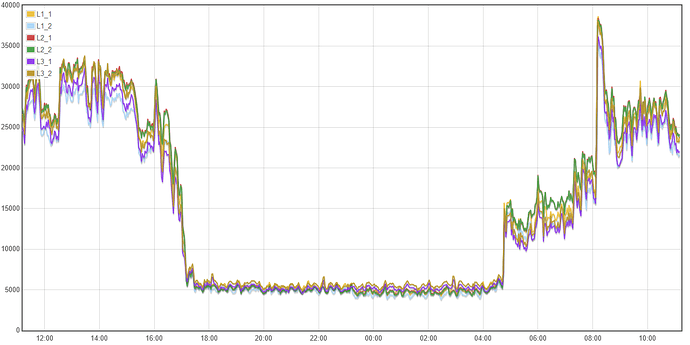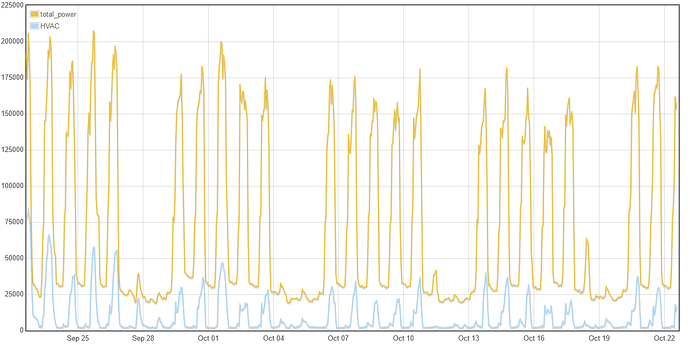Here’s an update on this project. There were a few interruptions unrelated to the IoTaWatt. The power supply GFCI tripped and I made a configuration error while removing the derived three-phase experiment. Nevertheless, the unit has been running flawlessly since September 24.
As of yesterday, October 22, the plant had used 46,000 kWh by their meter reading (400 kWh resolution). IoTaWatt recorded 46,029 during the same period - a stunning 0.06% difference! That has to be tempered with the reality that because the meter has 400 kWh resolution, the meter reading could be anywhere from 45,601 to 46,399 kWh, so the IoTaWatt is definitely within +0.9%/-0.8%, and probability says there is a 76% chance it is +0.5%/-0.4%.
As previously explained, the incoming mains are parallel lines with a CT on each line. So the total power is the sum of six lines. Here’s what that looks like for 24 hours:
At the same time, the IoTaWatt is measuring the load to the HVAC panel. In August, the HVAC was over 100kW at noon.
As you can imagine, when using 250kW, there’s a lot going on. The plant has numerous panels and transformers throughout. By example, the wave soldering machine is European and uses 230V/400V via a stepdown transformer from 277V/480V. IoTaWatt has no problem changing gears from one to another. In fact, if using derived reference, one unit could conceivable be monitoring circuits on 277V, 230V and 120V panels at the same time.
The next phase will start to break down usage to develop cost saving strategies. The tariff is also based on demand, so we will be measuring Var as part of the equation.


